Beans belong to the Leguminosae family. They are considered nutritious vegetables as they contain a high amount of vegetable protein. Pods can be green, yellow, red, or purple, depending on the variety. It is used as a vegetable and eaten as a dried Bean or a fresh green Bean. Follow these simple steps to get more yield in Beans. Let’s check out the top 15 steps to boost Beans yield.
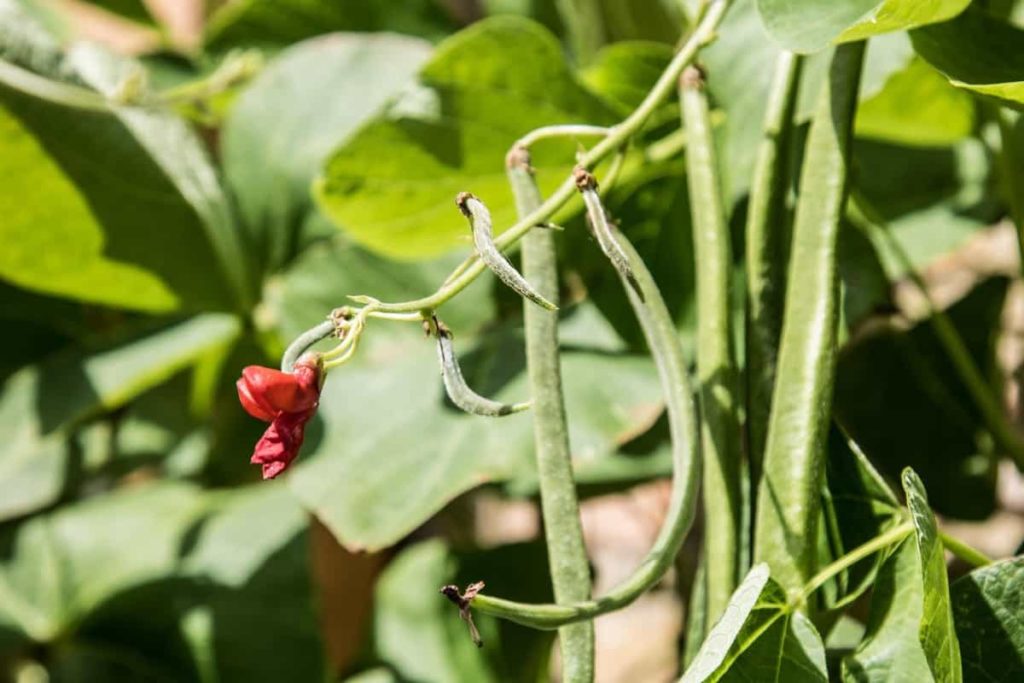
Top 15 steps to boost Beans yield
Step 1: Soil requirement for better Bean yield
Beans grow best in slightly acid-neutral soils, with pH between 6 and 7. Clay or silt loams are better for Bean production than sandy soils, although good drainage is essential. Use well-decomposed manure or compost when planting to increase soil organic matter. Please do not use any fertilizer that contains herbicides, as it can kill your vegetable plants.
Although it can be grown on any soil, loams and clay loams are best for higher yields. If you plant Beans in the sun, your yield will be better, although they will survive in partial shade at the cost of a smaller crop.
Step 2: Land preparation for good plant growth
Bean requires a bold and hard seed coat completed by total essential cultivation such as plowing, harrowing or discing, and planning. A good seedbed requires soft but compact soil, adequate moisture and herbaceous, and pre-harvest plant debris. The acidic soil of the hills should be treated with lime before sowing.
The soil is plowed 2 to 3 times with a power tiller or spade to prepare the field. Beans grow well in nutritious soils with good drainage. Properly loosen the soil to break up any clay-like structure. Beans are nitrogen-fixing plants; they can make the soil more fertile by drawing nitrogen. Just compost your soil, and you will be good to go to the next planting stage.
Step 3: Best place to plant Beans
The best places have full sun (partial shade is tolerated, but this reduces yields), average fertility, well-drained soil (but consistently moist), and good air circulation. If Bean plant diseases have been a problem in recent years, do not replant in the same place, as bacterial and fungal diseases can re-attack in more winters.
In case you missed it: Growing Broad Beans From Seed – Planting Guide
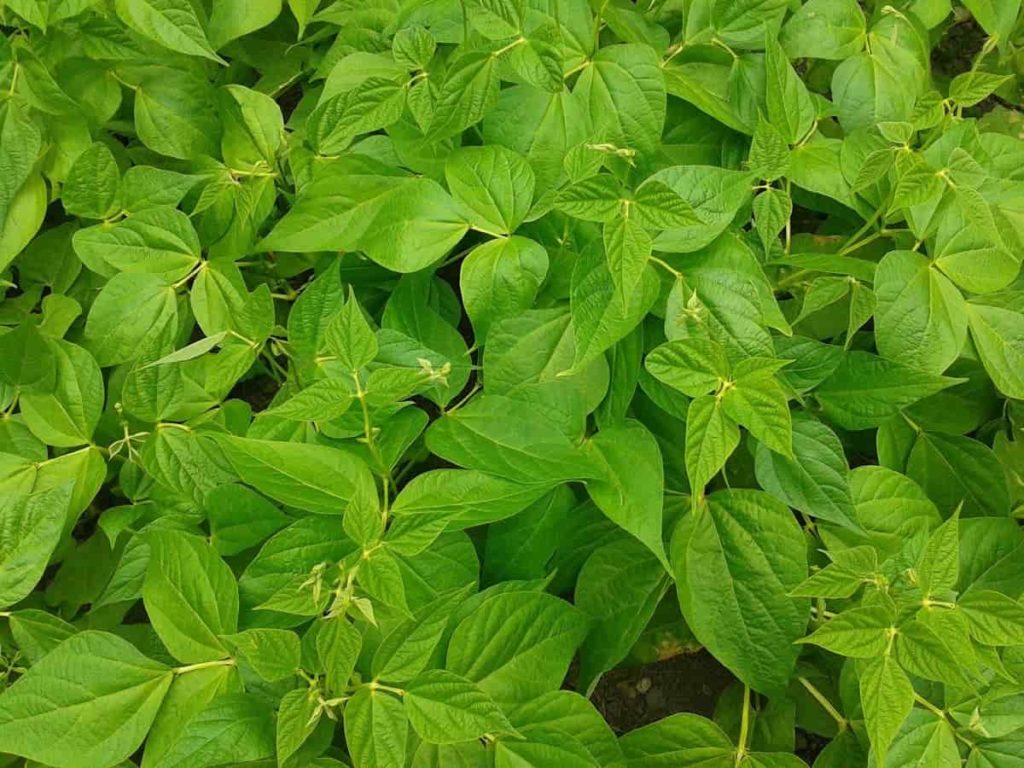
Step 4: Select high yield varieties
There are many classes and types of Beans available, and a farmer decides based on the growing area (i.e., soil type and climate), production (i.e., growth potential), and markets (i.e., selling places). Some of the high yield varieties are;
Arka Arjun – Plants are bushy, vigorous, and insensitive. The pods are green, smooth, and stringless. Suitable for both spring and summer. Resistant to MYMV disease. Pod yield is 17 tons per hectare in 70 days.
Arka Anoop – Resistance to both rust and bacterial blight. The pods are long, flat, and straight. Pod yield is 20 tons per hectare in 70-75 days.
Arka Bold – Plants are bushy. The pods are flat stringless, fleshy, crisp, extra-large (16 cm), and medium long. Rust resistant. Production capacity of 15 tons/hectare in 70 days.
Arka Komal – Resistance to both rust and bacterial blight. Pods are long, flat, and straight. The pod yield is 20 tons per hectare in 70-75 days.
Arka Sharath – It has round, stringless smooth pods suitable for steamed Beans. Pods are crispy, fleshy, and perfectly round without parchment. The plants are bushy and are suitable for both Kharif and Rabi seasons. It has a high production capacity of 18.5 tons per hectare in 70 days.
Arka Suvidha – Pods are straight, oval, light green, fleshy, wireless, and crisp. Duration 70 days. Pod production is 19 tons/hectare.
Arka Sukomal – It is high yielding rust-resistant pole Bean variety. Pod production is 24 tons per hectare in 100 days.
Step 5: Tips for making Bean plants grow fast
Regardless of their type, growing Beans do not require additional fertilizer but require constant irrigation, especially during budding and pod arrangement. Water the Bean plants one inch (2.5 cm) per week, depending on the weather conditions. Water in the morning so that the plants can dry out quickly and avoid fungal diseases.
In case you missed it: Growing Butter Beans, Planting Tips, Ideas, Secrets
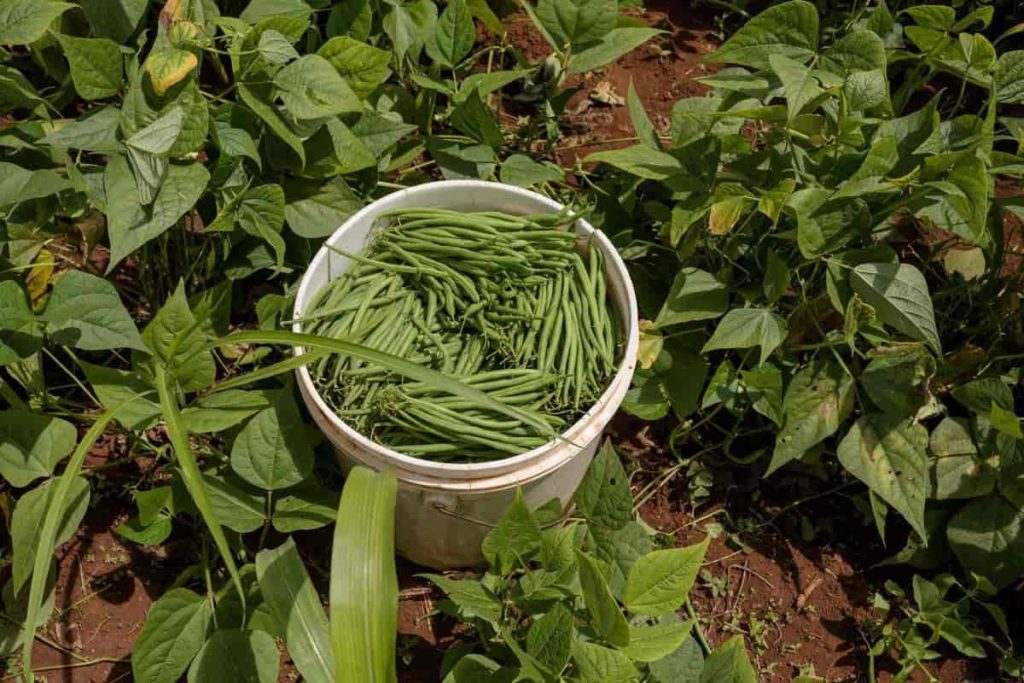
Step 6: Installing trellis for plant development
Plant trails in your ground to support the plant before sowing the seeds if you plan to plant pole Beans. Place the trellis exactly where you plan to grow your Beans. As the Bean plant matures, it will move around the installed trails. Ensure your trails are planted deep in the ground to prevent falling and protect plants from damage.
Step 7: Bean fertility and crop nutrition for improving crop yield
- Proper fertilizer will increase crop yields.
- It will promote the early growth of the crop.
- It will reduce the abortion of flower buds.
- It will increase the product quality in terms of size, shape, taste, and flavor.
Step 8: Nutrients for good Bean formation
Before deciding on the nutritional activity of any crop for your Bean crop, it is always advisable to analyze the soil.
Nitrogen production – The main reason Beans do not need more nutrients is that they can produce nitrogen. Like all legumes, Beans have a symbolic relationship with nitrogen-fixing bacteria. These bacteria form nodules on the roots of Bean plants. This process takes some time, especially if you have never grown Beans in the area. To speed up nitrogen accuracy, wash Bean seeds with bacterial inoculant Rhizobium phaseoli, stimulating bacterial growth.
Phosphorus – Phosphorus mainly helps in the growth of the root system of Bean plants. Since Beans are not a rich source of many nutrients, a 3-inch compost layer may be all that is needed for the Bean plant to grow. However, if the test shows that the soil is deficient in phosphorus, use 5-10-10 fertilizers or add 1 pound of bone meal per 100 square feet for light nutrient intake.
Potassium – Potassium is a helpful player in the growth of Bean plants. Although it does not directly affect stem or root growth like phosphorus and nitrogen, it does keep plants healthy enough to support that growth. A light feeding of compost is generally all Bean plants need adequate potassium.
In case you missed it: Hydroponic Beans Farming – Yield, pH, Nutrients
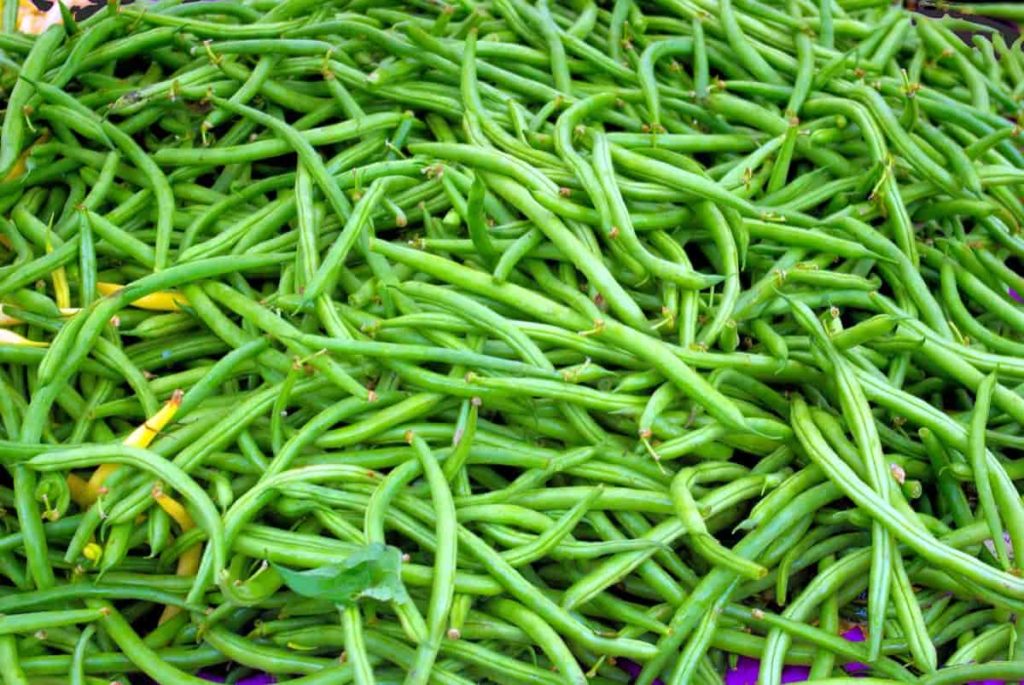
Step 9: Tips for optimal plant growth
In addition to good growth nitrogen, phosphorus, and potassium, Beans also require small amounts of calcium, manganese, and iron. Your soil may have the right amount of these nutrients, especially if you replace it with compost or manure every year. Beans also need warm soil, constant moisture, and at least six to eight hours of sunlight each day to thrive.
Bean seeds do not germinate well in cool, moist soil, so wait until after the last expected frost to plant them. Potassium should be added to Bean plants while Beans are prepared to accelerate the growth process and increase quality.
Step 10: Reason for the flowers falling without making pods
- Normal early season drop – Most Bean plants naturally leave some flowers early in the season. It will pass quickly, and soon, the Bean plant will produce pods.
- Lack of pollinators – While many Beans are fertile, some are not. And fertil plants will produce better if they get some help from the pollinators.
- High temperatures – Bean flowers will fall when the temperature is too high (usually above 29 C). Excessive heat makes it difficult for the Bean plant to keep itself alive and drop its flowers.
- The soil is very wet – Bean plants bloom in very wet soil but will not produce pods. This is because wet soil prevents plants from getting adequate nutrients from the soil, and bean plants will be unable to support the pods.
- Too much fertilizer – Although piling on the fertilizer may seem like a good idea, it can often cause problems, especially with Beans. Bean plants, which are high in nitrogen, have difficulty producing pods. It will also cause the Bean plants to produce fewer flowers overall.
- Not enough water – As temperatures rise, Bean plants that receive very little water are stressed and drop their flowers because they need to focus on keeping the mother plant alive.
- Not enough sunlight – Bean plants need five to seven hours to produce Beans and eight to 10 hours to produce Beans well. Lack of sunlight can be caused by incorrectly locating plants or placing Bean plants too close to each other.
- Diseases and Insects – Diseases and insects can weaken the Bean plant. Bean plants that have become weak will focus on keeping themselves alive instead of making Beans.
Step 11: Controlling weeds for high-quality Beans
Frequent, shallow cultivation will eliminate weeds before they become a problem. Bean plants form a deep taproot, but some of their lateral roots are also close to the ground surface, so it is important not to cultivate too deep. Be careful not to damage the plants while planting. A dense stand of bushes will discourage the weed inside the row. Mulching with weed-free grass clippings or other organic matter to a depth of three to four inches can help prevent weed growth, which reduces the need for repetitive cultivation.
In case you missed it: Growing Beans At Home – A Full Planting Guide
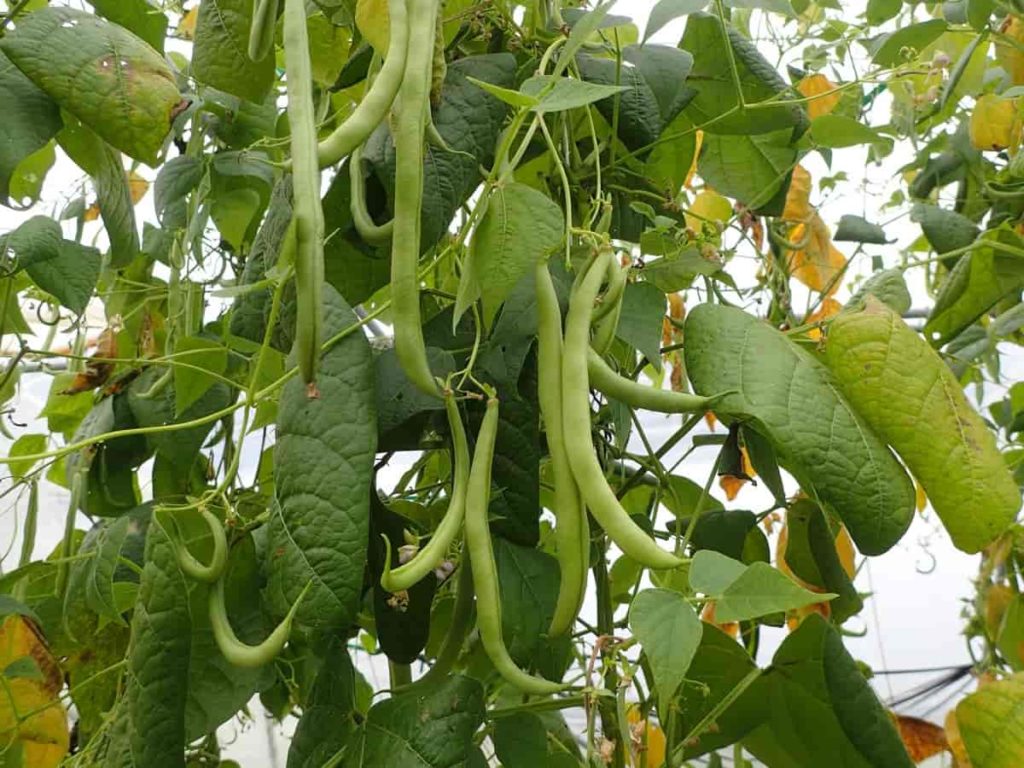
Step 12: Pest management for increasing yield
Farmers work hard to manage anything that would reduce the health of their Bean plants. Potential enemies of the Bean plant include weeds, pests, and diseases. Farmers use various techniques to control these pests, including crop rotation, tillage, row spacing, and some pesticides and herbicides (if necessary). Some types are designed to be resistant to pests. These varieties are very helpful in growing healthy, high-quality Beans with low input. Unfortunately, many types of Beans are affected by the disease.
However, most Bean problems can be prevented by selecting and applying disease-resistant varieties. It also helps rotate the Beans at least every other year and follow proper watering and spacing guidelines. Many fungi species live in the soil, which can wreak havoc on Bean crops, and as a result, Beans do not grow. The roots may die, and the leaves may turn yellow. Plants can show color and poor growth. Ensure the Beans are planted in well-drained soil, as excess moisture is a suitable environment for fungus growth.
Step 13: Reasons for Bean leaves turn yellow
One of the causes of yellow color leaves in Beans is excessive watering. When the soil is wet or not well-drained, plants get absorbed in water, which can cause root rot, leading to yellow leaves. Nitrogen deficiency can also cause your Bean leaves to turn yellow. You can apply fertilizer after harvesting and planting in the fall, rotate nitrogen-fixing crops, or use high nitrogen commercial fertilizer.
Diseases like mildew in the soil can ruin your hard work. It can cause your Bean leaves to turn yellow as the roots may begin to die. These fungi work well in wet soils. To avoid them, plant your Beans in well-drained soil. Bean rust is also caused by fungus. In this case, the plant leaves turn yellow and then fall off. Insects such as aphids can cause yellowing of your leaves and wrinkles on the affected area. Eating aphids on your Bean plant is that it stops and therefore causes damage.
Step 14: Tips to fix yellow leaves on Beans
Yellow leaves can be a sign of anxiety and nitrogen deficiency, although the main nitrogen source is air. Yellow leaves on Beans, once the leaves turn completely yellow, it becomes clear that it is no longer providing energy to the plant and, therefore, should be discarded. The leaves will eventually wither and fall off if allowed to grow naturally. Therefore, to cure yellow leaves, you may need to add some nitrogen fertilizer.
Be sure to put the fertilizer well around the drip line. Next, water the plant, making sure water enters the soil around the plant. The already yellow leaves of the Beans may be affected, but after a few days, you will see that the new growth on your Beans is green. It is almost impossible for yellow leaves to turn green again. If the leaf is resistant, please do not tear it. Instead, use scissors near the stem to cut the leaves.
In case you missed it: Organic French Beans Farming, And Production Practices
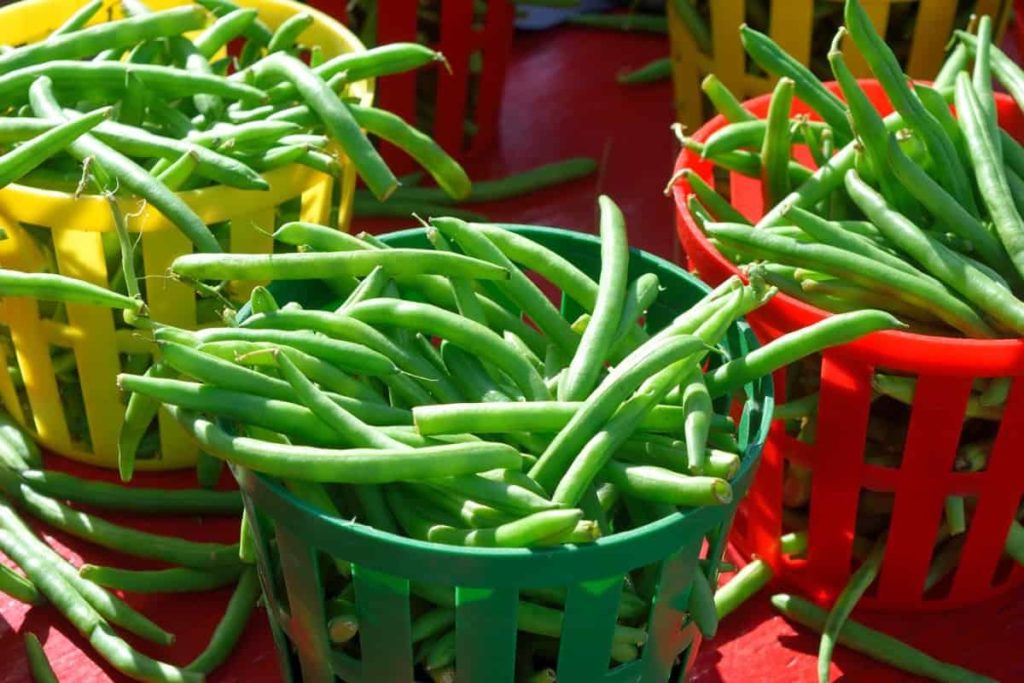
Step 15: Harvesting Beans for more production
In general, harvest Beans in the morning when their sugar levels are highest. Green Beans are young and tender before the seeds are fully developed inside. Pick green Beans every day. The more you choose, the more Beans will grow. When your Beans are fully grown, but before the seeds are fully formed, now is the time to pick your Beans. Wait for the morning dew to dry from the Bean plants.
When dew is present, picking Beans can spread bacterial blight and damage your Bean plants. Plan to pick Beans frequently and regularly, and your Bean plants will reward you for planting flowers and producing more Beans throughout the season. Once the Beans begin to show their shape, they dry out. Be careful when pruning, as you do not want to damage the plant and prevent new Beans from growing.
For vegetables: The crop will usually be ready for picking 40 to 50 days after sowing, depending on the crop type and season. Plant crops in cold periods, such as late afternoon or early morning. Immediately after harvesting, move the harvested crop to a shady place. In addition, 2 to 3 pickings will be done at intervals of 4 to 5 days.
For pulse: The crop ripens in 125-130 days. Once fully matured, the plants are pruned with a sickle characterized by severe leaf fall, discoloration of the Beans, and hardening of the grains. After drying in the sun for 3 to 4 days, the harvested items are stored in bundles on the threshing floors. Clean Bean seeds should be dried in the sun for 3 to 4 days so that their moisture content is 9 to 10%.
- Economical Aquaculture: A Guide to Low-Budget Fish Farming
- 15 Common Planting Errors That Can Doom Your Fruit Trees
- How to Make Houseplants Bushy: Effective Tips and Ideas
- Innovative Strategies for Boosting Coconut Pollination and Yield
- Pollination Strategies for Maximum Pumpkin Yield
- The Complete Guide to Chicken Fattening: Strategies for Maximum Growth
- Natural Solutions for Tulip Problems: 100% Effective Remedies for Leaf and Bulb-Related Issues
- Revolutionizing Citrus Preservation: Towards a Healthier, Greener Future
- Natural Solutions for Peony Leaf and Flower Problems: 100% Effective Remedies
- Maximizing Profits with Avocado Contract Farming in India: A Comprehensive Guide
- Natural Solutions for Hydrangea Problems: 100% Effective Remedies for Leaf and Flowers
- The Ultimate Guide to Choosing the Perfect Foliage Friend: Bringing Life Indoors
- From Sunlight to Sustainability: 15 Ways to Use Solar Technology in Agriculture
- The Ultimate Guide to Dong Tao Chicken: Exploring from History to Raising
- The Eco-Friendly Makeover: How to Convert Your Unused Swimming Pool into a Fish Pond
- Mastering the Art of Delaware Chicken Farming: Essentials for Healthy Backyard Flocks
- 20 Best Homemade Fertilizers for Money Plant: DIY Recipes and Application Methods
- How to Craft a Comprehensive Free-Range Chicken Farming Business Plan
- Brighten Your Flock: Raising Easter Egger Chickens for Beauty and Bounty
- How to Optimize Your Poultry Egg Farm Business Plan with These Strategies
- Subsidy for Spirulina Cultivation: How Indian Government Schemes Encouraging Spirulina Farmers
- Ultimate Guide to Raising Dominique Chickens: Breeding, Feeding, Egg-Production, and Care
- Mastering the Art of Raising Jersey Giant Chickens: Care, Feeding, and More
- Ultimate Guide to Raising Legbar Chickens: Breeding, Farming Practices, Diet, Egg-Production
- How to Raise Welsummer Chickens: A Comprehensive Guide for Beginners
- How to Protect Indoor Plants in Winter: A Comprehensive Guide
- Ultimate Guide to Grow Bag Gardening: Tips, Tricks, and Planting Ideas for Urban Gardeners
- Guide to Lotus Cultivation: How to Propagate, Plant, Grow, Care, Cost, and Profit
- Agriculture Drone Subsidy Scheme: Government Kisan Subsidy, License, and How to Apply Online
- Ultimate Guide to Raising Araucana Chickens: Breed Profile, Farming Economics, Diet, and Care
- Bringing Hydroponics to Classroom: Importance, Benefits of Learning for School Students
- Ultimate Guide to Raising Polish Chickens: Breed Profile, Farming Economics, Diet, and Care
- Ultimate Guide to Raising Australorp Chickens: Profile, Farming Economics, Egg Production, Diet, and Care
- Silkie Chicken Farming: Raising Practices, Varieties, Egg Production, Diet, and Care
- Sussex Chicken Farming: Raising Practices, Varieties, Egg Production, Diet and Care
- Homemade Feed Formulations for Livestock: Discover Cost-effective Starter to Finisher Feed Recipes
Good knowledge in beans production